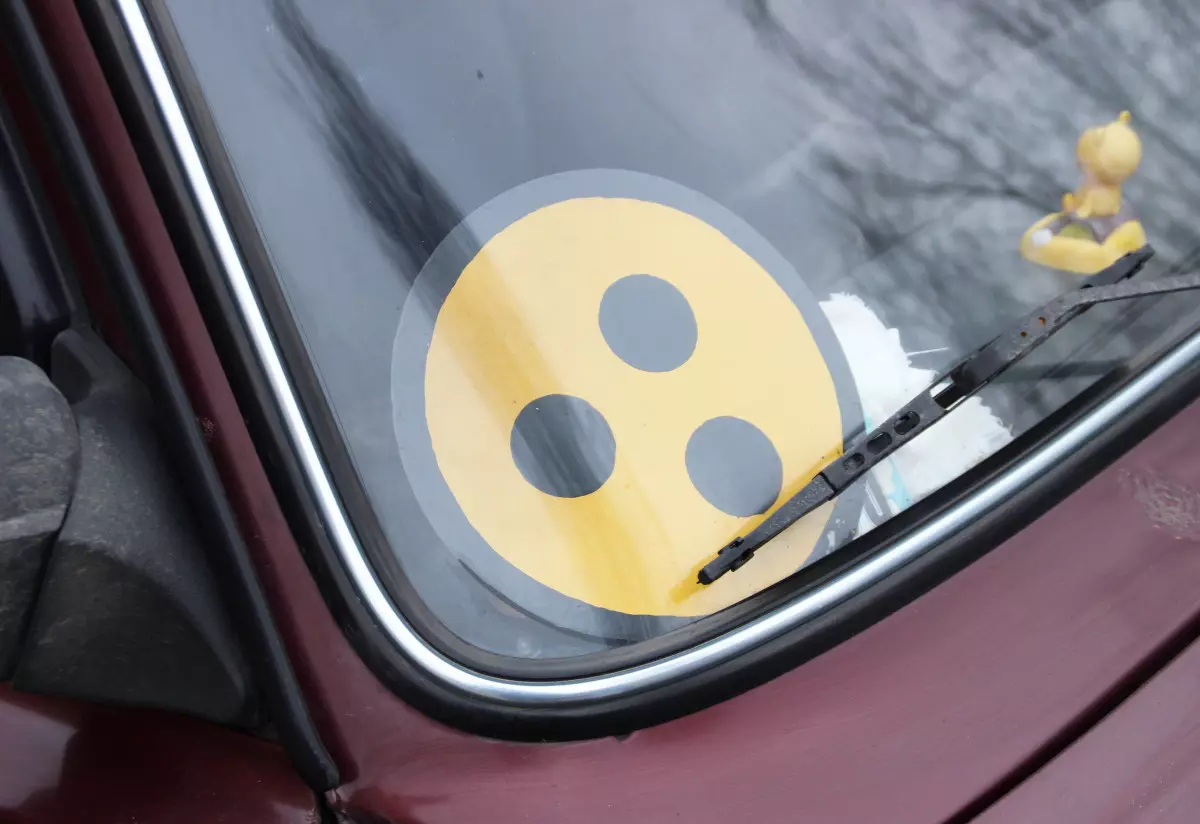Can Deaf People Drive?
You may be wondering: can deaf people drive? The short answer is yes; it is legal for a deaf person to get a driver’s license in over 90 countries, including the United States. Deaf people can drive because driving is predominantly a visual task. Visible signs dictate road rules, emergency vehicles flash their lights, and signal lights are visual.
History of Deaf Drivers in the U.S.
While deaf people in all the states in America have the right to drive today, this wasn’t always the case. In fact, even if you are able to answer “can a deaf person get a driver’s license?” with a yes today, a few decades ago, the situation was very different.

The Deaf Community has had to fight for their freedom.
In the 1920s, when the United States first passed motor vehicle laws in the country, many state legislations refused deaf and hard of hearing individuals the right to receive a driver’s license. The Deaf Community, with the support of the National Association of the Deaf and its state committees, was able to get these discriminatory laws repealed by educating hearing people that deaf drivers don’t pose any threat to public safety. In fact, deaf people tend to have better vision than non-deaf individuals, a huge advantage when driving.
Vehicle Modifications for Deaf Drivers
Thanks to the evolution of modern technology, not only do deaf drivers in the United States have the right to drive, but they also can modify their vehicles to assist their unique needs.

How do deaf people drive? Deaf people depend on other sensory channels such as vision and touch to stay aware of their surroundings while driving. However, they can also add car accessories to a personal vehicle or the family car to help them navigate smoothly.
Sound Detector and Lighted Panel
Many deaf and hard-of-hearing individuals use electric devices in their cars to stay alert to their environment, such as a lighted panel that alerts drivers of sounds coming from outside their vehicle. A sound detector electronically detects high decibel sound waves, like emergency vehicle sirens. It sends a signal to the lighted panel to guide the deaf driver accordingly.
Panoramic Rear-View Mirror
For deaf drivers seeking vehicle safety modifications, a panoramic rear-view mirror is one of the most important things to spend money on because it offers a much better field of vision than a typical rear-view mirror. Deaf and hard-of-hearing drivers rely on their sight and car mirrors to stay alert on the road. A panoramic rear-view mirror eliminates blind spots, especially when driving in reverse.
Artificial Intelligence
Many car manufacturers, such as Hyundai, want to incorporate artificial intelligence to assist deaf drivers in their vehicles. Hyundai is developing a technology that uses artificial intelligence to identify sounds outside the car and visually communicate it with the driver. To accomplish this, two driving assist systems are being incorporated: audio-visual conversion and audio-tactile conversion.
Audio-visual conversion turns sound patterns into pictograms that appear on the head-up display. For example, suppose a fire truck or an ambulance is coming up behind the deaf person’s car. In that case, the display will show a pictogram of the vehicle and an arrow referred to as a heads-up display that indicates from which direction it is approaching on the car’s windshield. Moreover, the steering wheel vibrates to notify the driver about their distance from outside obstacles.
Hyundai’s steering wheel will also come with built-in multi-colored LED lights that light up to inform the diver of navigational information so that they can focus on the road rather than the GPS. For example, to indicate that the driver has to make a right turn, the right side of the LED-built steering wheel will light up.
Challenges Deaf Drivers Face
Driving may be more challenging for people who are deaf and hard of hearing, but that doesn’t mean that it is unsafe. Still, discrimination and logistical issues out of drivers’ control may arise when driving while deaf. Below are four challenges that many deaf drivers may face.

Discrimination
Even though deaf people can legally drive and own a driver’s license, some of them frequently experience discrimination, especially when they want to rent a car or test drive a new vehicle.
Accident Fault
When a deaf or hard of hearing person gets into a car accident, they are often blamed for the incident. Because of assumptions hearing people might have, it can be difficult for deaf drivers who are wrongly accused of causing an accident to prove they are not at fault.
Use of Both Hands
American Sign Language (ASL), a language used by many in the Deaf community, utilizes hand signals to communicate. This poses a challenge for deaf drivers to keep their hands on the wheel and eyes on the road if they want to speak with passengers.
Good Eyesight
Deaf people frequently use their view and side mirrors to change lanes and pass other cars. Deaf people who have poor eyesight may be limited in their ability to drive safely. Not to mention, constant visits to the optometrist may be costly and lead to financial problems.
Disability Car Insurance
Deaf and hard-of-hearing drivers are covered by the same auto insurance companies and policies as other drivers. Deaf drivers can elect for additional coverages that offer specific protection for custom modifications, such as siren detectors.

Special equipment and modifications may make a car more expensive to insure. The insurance company should cover disability-adapted vehicles fairly and at a reasonable price. The Americans with Disabilities Act (ADA) prohibits insurance companies from charging deaf drivers more based purely on limited hearing. Any car modifications must be disclosed to the insurance company to avoid the risk of losing coverage or reimbursement when filing an auto insurance claim.
Unfortunately, there is no such thing as auto insurance discounts for disabled people and deaf people. Car insurance companies cannot legally refuse to work with deaf and disabled drivers based on assumptions about their ability to drive safely. They can, however, charge a higher premium based on perceived safety risk. If a deaf individual’s driving record has enough strikes, an insurance company may deny coverage to that individual altogether.
FAQ

Are Deaf People Allowed to Drive?
Deaf people are allowed to drive and get a driver’s license in over 90 countries, including the United States.
How Do Deaf People Drive?
Deaf people drive the same way as hearing people, but they rely more on their other sensory channels like vision and touch to stay alert on the road. Some people add car accessories such as panoramic rear-view mirrors, sound detectors, and lighted panels to help them be more aware of their surroundings.
How Can Deaf People Stay Safe While Driving?
There are many precautions deaf drivers can take to stay safe on the road. In addition to car modifications that improve a driver’s line of sight and awareness of their surroundings, individuals may choose to wear hearing aids. Drivers who rely on hearing aids should make a habit of checking the device’s battery before traveling by car. It’s also a good idea to keep spare batteries on hand.
Another tip is to reduce noise. It is best to turn the radio volume down and keep the car windows closed to eliminate road noise that may compete with important sounds that will help you stay alert and drive safely.
Is a Hearing Aid Required to Drive?
While it is legal to drive with hearing aids, it is not required for deaf individuals. Many deaf individuals choose not to wear hearing aids at all.
Everyone is different, but generally, people born deaf and those who are fully deaf cannot benefit from wearing hearing aids while driving. In such cases, cochlear implants may be helpful. People who are partially deaf or hard of hearing can improve their hearing by wearing cochlear implants or hearing aids. That is because hearing aids amplify sounds and make them more detectable to the ear.
It’s important to mention that some deaf people like to wear hearing aids while driving to signal to other drivers that they are hard of hearing.
What Happens When a Deaf Person Gets Pulled Over?
Deaf drivers carry a personal placard attached to their visors, indicating that they are deaf or hard of hearing. When an officer approaches the vehicle, they should show that placard to the officer.
When it comes to the most effective communication method, every situation is different. In some cases, communication can be established by writing. In other cases, drivers present an instruction card that allows the officer to ask for standard items such as driver’s license, registration, and proof of insurance and explain why the driver has been pulled over. An instruction card can make all the difference in bridging the communication barrier between the officer and the driver.
Some deaf people choose to read lips and respond vocally. In the case of a nighttime motor vehicle stop, the use of a flashlight can affect communication between officer and operator. When the officer holds a flashlight to illuminate the interior of the operator’s vehicle, the flashlight could cause the driver to be momentarily stunned. In this situation, turning on the vehicle’s interior lights may help drivers maintain effective communication while reading lips.
Can a Deaf Person Get a Job as a Commercial Driver?
Yes, with some limitations. In 2013, the United States Department of Transportation (DOT) announced that deaf drivers could operate commercial motor vehicles after decades of prohibition. Deaf and hard of hearing people can get a job as truck drivers, cab drivers, or even work as independent contractors for ridesharing companies like Uber and Lyft.
To qualify for a Commercial Driver’s License (CDL), one must pass a basic hearing test. To be eligible, the United States Department of Transportation (DOT) requires that drivers can hear forced whispers at no less than five feet away (with or without a hearing aid). Also, an individual cannot have hearing loss in excess of 500 Hz with or without the use of a hearing aid.
Are the Rules Different for Someone Who Recently Went Deaf Due to Injury?
If you’re wondering, “Can you drive if you’re deaf or newly deaf?” the answer is yes, you can. Someone who recently went deaf due to injury can legally continue driving a vehicle. If they are in the process of obtaining a driver’s license, they may continue to do that as well. To get used to their new senses and improve their visual skills, a newly deaf individual may find it helpful to practice driving in familiar areas before attempting to drive in high-stress situations like driving on a freeway.